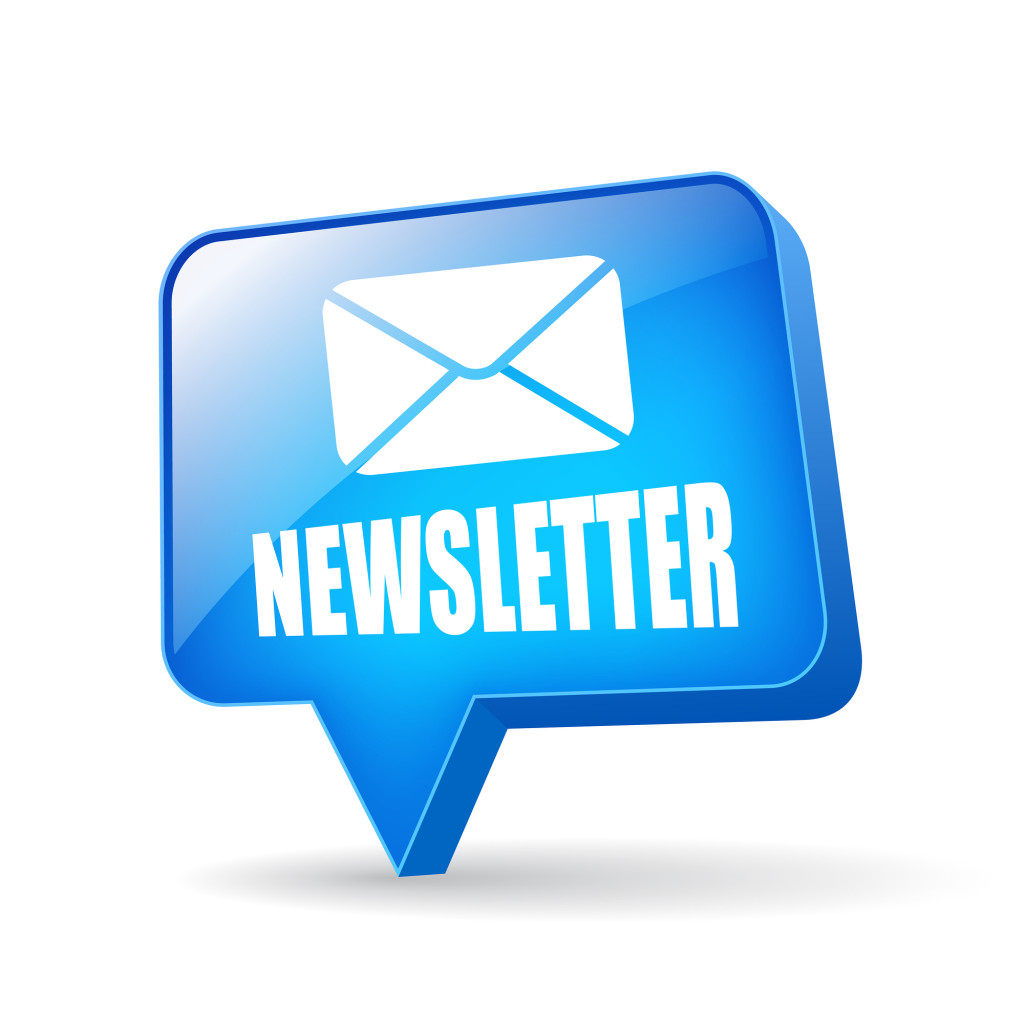Are you having trouble capturing leads with your website? Are you having trouble converting leads into patients? Do you often feel like you’re not properly marketing yourself to existing patients?
Do you feel like they’re forgetting you?
 If so, let me pose a few more questions:
If so, let me pose a few more questions:
Does your dental practice have an email list? Do you actively seek out email newsletter signups? Are you trying to capture emails from your current and potential patients?
If you answered “no” to any of these questions, it’s time to reconsider.
How often do you check your email, even when you’re at home or on the go? 72% of online adults send and receive email from their smartphones at least once per week.
According to an in-depth study from Merkle, 74% of people say email is the method of choice when it comes to commercial communication. It edges out direct mail five to one. People of all ages use email, though the number drops off slightly at around 65 years of age.
Since mobile usage is on the rise (and isn’t showing any signs of letting up), it’s also important to think about how people interact with email on their mobile devices.
According to the Pew Research Center,
Email has long ranked as one of the most common activities that users take part in online since the desktop/laptop era, and it continues to play a prominent role in the mobile era as well. Some 88% of smartphone owners used email on their phone… making email a more widely-used smartphone feature than social networking, watching video, or using maps and navigation, among others.
The numbers tell us people still actively use email, and they prefer it for marketing-related communication.
Email marketing for dentists works. Are you ready to take advantage?
The Inbox Connection
Can you imagine someone looking forward to an email from their dentist? It’s tricky, but it’s totally possible.

If you approach email marketing the right way, it forms a connection with your patients and your leads. Focusing on their interests and their needs, instead of singing your own praises or running headlong into self-promotion, means they’ll look forward to reading your emails.
Another plus– Email marketing is both effective and cost-effective.
From inbound marketing software giant HubSpot:
Companies using email to nurture leads generate 50% more sales-ready leads and at 33% lower cost. And nurtured leads, on average, produce a 20% increase in sales opportunities compared to non-nurtured leads.
Email is also nearly 40 times better than Facebook and Twitter for acquiring new customers (or patients), according to McKinsey’s exhaustive research.
Not everyone on your list will open your emails, no matter how good your subject line and your content is. Some people will unsubscribe. Patients you see twice a year will unsubscribe. It’s a fact of life.
You can’t craft an email that resonates with absolutely everyone, and not everyone wants another email in their inbox every month or so.
You can focus on providing value, speaking to your patients and leads’ wants and needs, and following email marketing best practices, though– and you’ll reap the benefits.
Building Your List
Before you connect with your current and future patients, you need to build your email list. They can’t sign up if there’s no way for them to opt in, and you can’t get in touch with them if you don’t have the necessary software.
Sure, you can build a list, compose a message, and input every email address in by hand, but it’s not efficient. You’re busy running your practice, and your team members are busy with making appointments, financial consulting, and helping you care for your patients. You need a quick solution that still affords your patients the personal touch they expect from your practice.
So, you need an email marketing service. Several reputable companies offer free plans that should allow you to send enough emails, per month, to satisfy a growing list. If your needs outgrow the free service, you can always upgrade later.
As far as free services for local practices go, I recommend:
If you have a dedicated marketing team and have more resources, you can go even further with your email marketing. These services have powerful analytics and customization tools:
As you grow your list and find the need for more features, list segmentation, and analytics, you’ll probably outgrow the free services. Or you might not. It depends on your goals and the size of your practice. Whatever the case may be, you have plenty of good options for email marketing software.
Once you’ve chosen your software, you’ll need to set up an email signup form on your website. Ideally, you’ll place it on the homepage and in your sidebar, so it can be accessed on most any page. Nearly any email marketing service you sign up for will provide forms and support. Ask your IT department if you need help integrating these forms.
Unfortunately, you can’t just place a signup form on your homepage and hope people will opt in. Your loyal patients might sign up but, for everyone else, you’ll need to give them an incentive.
Here are some ideas:
- Lead Magnets – In the digital marketing world, we call any piece of content a lead might want to exchange their email address (or any other information) for a “lead magnet.” For a dentist, that could mean a fun two-minute video that gets a child through toothbrushing time, a guide on which foods to avoid if you have braces, or informative literature on sleep apnea. Basically, your prospective patient signs up for your email list in exchange for useful content.
- Content Upgrades – Say you have a great blog post about foods you should avoid when you have braces. You can offer a better, more informative version of that same content (“Bonus content”) as an exclusive if a lead signs up for your email list. We call this tactic a “content upgrade.”
- Sample Newsletters – Want people to opt in to your email list? Show them your content is worth their time. Create a page on your website that features past newsletters– these sample newsletters will show them exactly what they’re getting. This only works if your email newsletters are worth their time, of course. So don’t showcase shoddy work or cookie-cutter newsletters.
- Receptionist – If your patient has a great visit, you might have your receptionist ask them if they’d like to sign up for your email list. Your receptionist will have to express the value of joining the list, and they’ll have to be comfortable pitching it to the patient. Sometimes the human touch is great for signups.
- Referral System – You can offer your existing patients discounts and other goodies if they refer a friend or family member to your email newsletter. It’s difficult in the dental world, so your patient will have to actually enjoy your newsletter in the first place. If this sounds like something you can pull off, there’s a nice guide here.
- Giveaways and Contests – People love giveaways and contests, and they’re a great way to score some signups for your email list. To enter, they simply have to sign up. You’ve likely entered one or two of these contests or giveaways yourself. Just make sure you offer the giveaway or contest to your existing subscribers, too– you don’t want to alienate loyal patients.
There are other ways to encourage people to sign up for your email list, too, of course. Some of them are more intrusive than the options I listed, but they still work. KISSMetrics has a great post on the subject, and I encourage you to read it if you want more ideas.
Email Marketing Best Practices

Once you’ve built your list, you have to send out an email. Ideally, your leads will open the email, read the content, and become further engaged with your practice.
A successful marketing email has an appealing subject line, compelling content, and value for the reader. It’s also sent out at the right time. You want to avoid sending emails too frequently, or your leads will either get annoyed or just become fatigued by your emails. You’ll also need a sensible, effective call-to-action in each email.
Subject Lines – According to MailChimp, the best subject lines are straightforward. They’re not pushy or overly sales-oriented.
They also have this to say about the worst subject lines:
On the “worst” side, however, notice how the subject lines read like headlines from advertisements you’d see in the Sunday paper. They might look more creative, but their open rates are horrible. It’s as if those email marketers assumed that subject lines have to jump off the screen and GRAB THE READER’S ATTENTION! or something. Unfortunately, most people get so much junk mail in their inbox, anything that even hints of spam gets thrown away immediately.
Your subject line needs to grab attention, too. Here’s a great resource from MailCharts about effective short subject lines. It also references which words tend to draw the human eye and brain. I recommend keeping your subject lines under 50 characters– otherwise they get cut off in your lead’s inbox.
Content – Now that your current or future patient has opened your email, it’s time to make it worth their while. Write content with a goal in mind. Obviously, you want to engage them. You want to stay hovering around the top of their mind. Each email should have a goal, though, whether it’s booking appointments for a teeth cleaning or reminding them they need to get their braces checked.
Content can and should contain:
- Personalization – Write the email like a personal letter, sent from you, the doctor. Keep it professional, but also keep a friendly tone– like you’d address another doctor or a respected friend.
- Humor – Dentists love to laugh. Patients love to laugh. If you (or someone at your practice) is naturally funny, use it to your advantage. If you make one of your subscribers laugh, they’ll be much more likely to open your future emails.
- Stories – Within this personal letter, tell a brief-but-interesting story. You live interesting stories every day, so it shouldn’t be a problem. If you can weave humor into your story, that’s even better.
- Theme – You want to keep your email to one overall theme. If you’re all over the place with your content, your reader is likely to get confused and move on to something else.
- Length – Keep it short. A few paragraphs for your main content is more than enough.
Value – Value goes hand in hand with content. Your content has to be useful and valuable to your subscribers. Value can come in the form of humor and stories, but you also want to prove your expertise as a dentist. Give a few helpful tips with each email. Offer discounts if you can. Share coupons for dental products– if you endorse Sonicare products, for instance, find a coupon and pass it on to your email list. You have to make opening your email worth their time.
Community – Encourage a sense of community with your subscribers. Mention a local event or two. Mention a local charity or fundraiser, and tell them how they can get involved. It can be simple, but nothing endears a local practice to its patients like being active in the community. Show your community pride through your email marketing.
Call to Action – Each of your emails should have a call to action with a link. The link can go to a landing page, your “contact us” page or anywhere you’d like your subscribers to go. Keep it simple and direct, and don’t be too pushy.
Time and Frequency – Sadly, there’s no surefire perfect time to send your email. It depends on your audience. If most of your patients are young people and college-aged kids, you might want to try sending emails at night. That won’t fly with people in their 40s and 50s, though.
Smart Insights says the best time for healthcare professionals to send emails is in the hours before 10am. That’s a great starting place. Tuesdays and Thursdays are also popular times to send email, but you might have a better response on Wednesday. You’ll have to test and see when your emails perform best.
Here is a list of six case studies that show when successful emails are sent.
Here’s a comprehensive guide on how to test your email marketing performance.
There are no shortcuts. You have to know your audience and test your emails relentlessly. That being said, don’t get discouraged when your open rate or click through rate or low. Just adjust, try again, and get better.
Word of mouth will always be your best friend when it comes to getting new patients in the door, but it’s not always steady or reliable. With email marketing, you can make a real connection and reliably keep new patients coming in the door. Email marketing for dentists is an under-utilized and highly-effective tactic.
We live in the age of email, and it’s not going away anytime soon. Email marketing is an excellent way to connect with your existing patients, and it’s also one of the best ways to nurture people into becoming your future patients. If you work at it and follow best practices, people will look forward to getting an email from their dentist every month.
To your marketing success!
-Brodie
